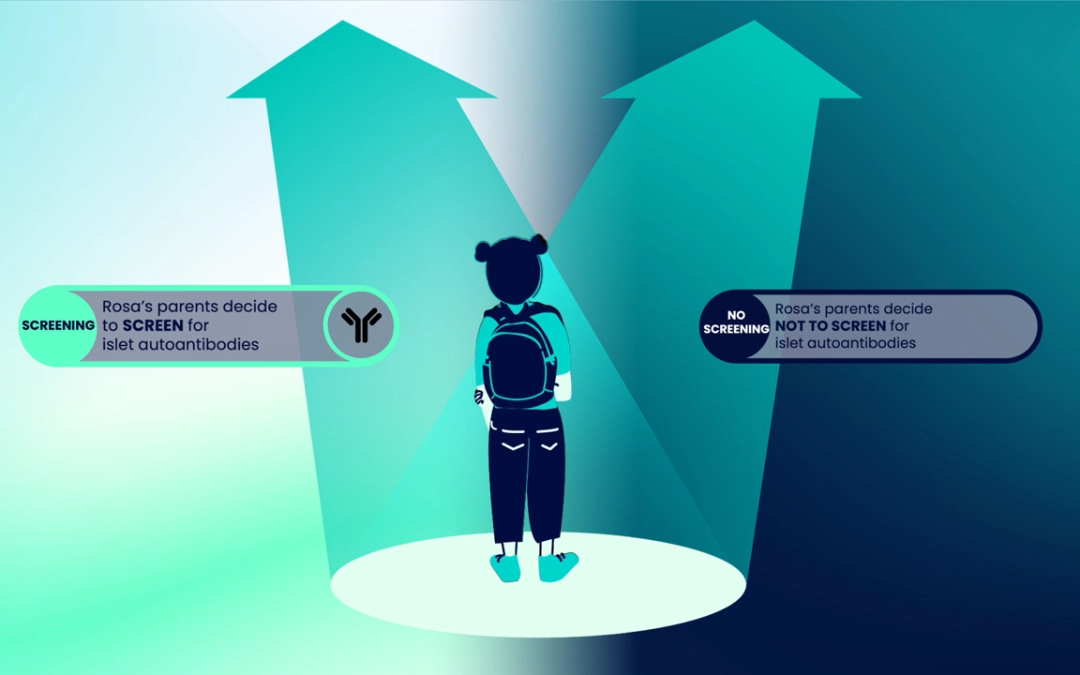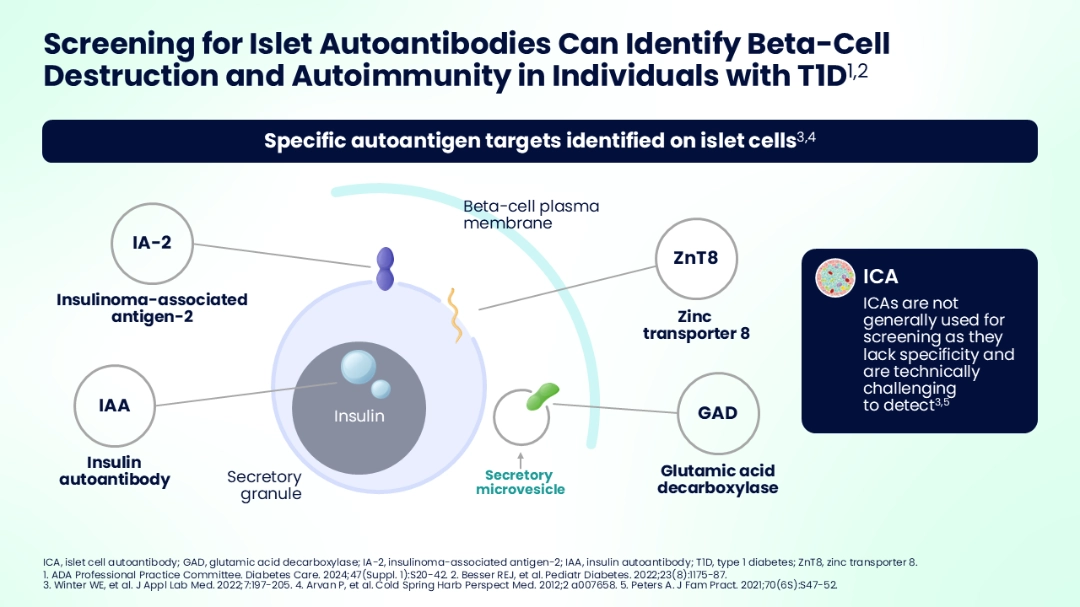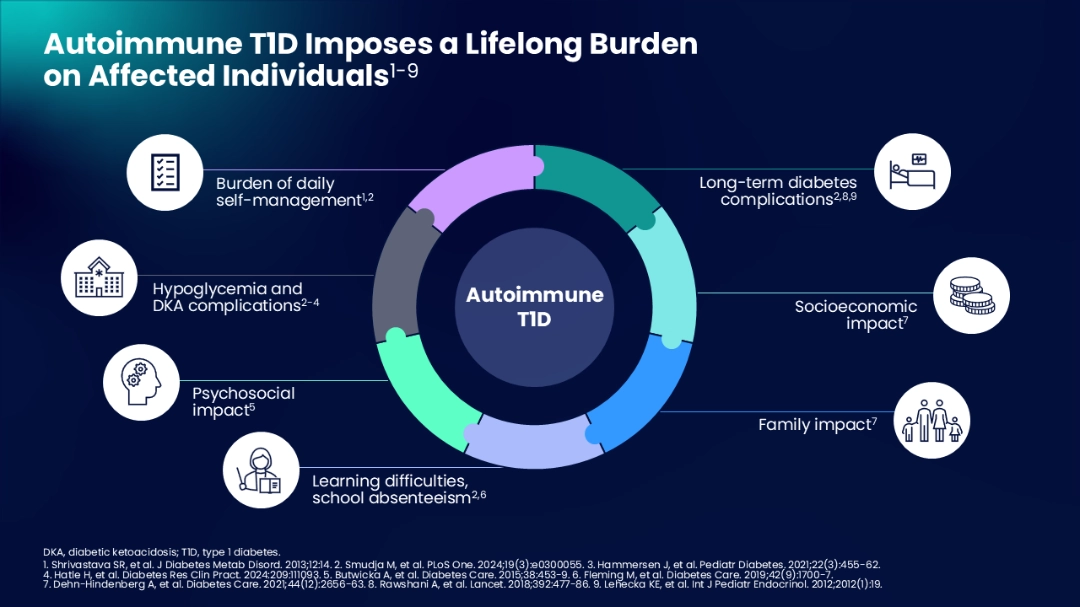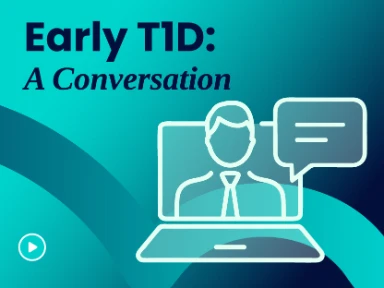- Resource
- BR1DGE
- Early Detection
- Staging
- Monitoring
- Article
ISPAD 2024 Symposium Summary
At the BR1DGE symposium at ISPAD 2024, leading experts shared their insights on the importance of screening for islet autoantibodies (IAb) to identify early-stage (Stage 1 and 2) autoimmune type 1 diabetes (T1D). Early identification, followed by monitoring and education, is crucial to help prepare people for a life with T1D.
This article is intended to be a summary only. Additional topics were covered in the live symposium in line with the applicable regulations but are not included on the BR1DGE platform.
Meeting Objectives
- Discuss the rationale and clinical benefits of autoantibody screening for presymptomatic type 1 diabetes (T1D) in children and adolescents
- Explore the psychological impact of living with presymptomatic T1D for young people and their families/caregivers
Speakers
Welcome and Introduction
Moshe Phillip

- In his introduction, Professor Moshe Phillip presented a sample case study around which the following two sessions revolved. Rosa is an active child, without family history of T1D and an unremarkable medical history. She has presymptomatic T1D, but neither she nor her family know it yet. As part of a routine medical visit, Rosa is invited to undergo IAb screening by her pediatrician.
- The subsequent presentations by Thomas Danne and Korey Hood considered the different paths that lie before Rosa, depending on whether her parents opted to screen for IAbs or not.
Strategies for Identifying and Monitoring Presymptomatic Autoimmune T1D in Young People
Thomas Danne

"Autoimmunity clearly starts at an early age. We now have the possibility of early diagnosis through antibody screening and subsequent monitoring prior to Stage 3, which provides opportunities for education and preparation."
Detection of IAb provides a window of opportunity to prepare for the onset of Stage 3 T1D through monitoring, education, and counseling, enabling improved long-term outcomes.
In the opening presentation, Professor Danne described the rationale for IAb screening in T1D, and explored current consensus guidance on screening and monitoring in early-stage T1D (Stage 1 and 2).

- The presence of IAbs is a marker of an autoimmune attack on insulin-producing beta cells.1 Screening for IAbs can detect autoimmune T1D months-to-years before clinical onset.2
- Risk factors for T1D can inform who to screen: risk of T1D is increased in those with a family history of T1D.3 However, only ~10% of people with T1D have a family history of T1D.4 Other risk factors, such as certain genetic risk alleles, or a personal/family history of other autoimmune diseases, can also increase the risk of T1D.3
- Recently published international consensus guidance provides specific recommendations on how to confirm IAb-positive status, and on tools available to monitor disease progression.5
- Early identification of T1D opens an important window of opportunity for education on the signs and symptoms of T1D, and preparation for future management and monitoring needs.6
- Benefits of early identification and subsequent monitoring of presymptomatic T1D include avoidance of hospitalization, a reduction of diabetic ketoacidosis (DKA) and related morbidities, and time to psychologically adjust and receive education.7,8
The Lived Experience of Autoimmune T1D: From Early Detection to Early Intervention
Korey Hood

"Many people diagnosed with T1D are given 5 minutes to adjust to their diagnosis before starting to inject insulin. Early identification provides a longer period of time to adjust, during which a lot of services can be provided to ensure a safer landing."
Monitoring following detection of early-stage T1D can help reduce the associated psychological burden for both the affected child and their caregivers/families.
Professor Hood introduced the second session by describing the lifelong burden that T1D imposes on affected individuals, focusing on the psychological impact.

- The burden of T1D affects both the individual and their family, and includes learning difficulties, school absenteeism, socioeconomic impact, long-term diabetes complications, and a marked psychosocial impact.1-3
- Early identification of T1D can reduce parental stress and depression at diagnosis of Stage 3 T1D.4
- According to current consensus guidance, the psychological burden of early-stage T1D should be monitored by assessing emotional, cognitive, and behavioral functioning, evaluating coping by the individual and their family, and integrating psychological support into routine medical visits.5
MAT-GLB-2405130-1.0 – 12/2024
At the time of this presentation, Moshe Phillip declared the following conflicts of interest: Ascensia, AstraZeneca, Bayer, DOMPE, DreaMed Diabetes, Eli Lilly, embecta, Lumos, Mannkind, Medtronic Diabetes, NG Solutions, Novo Nordisk, OPKO, Pfizer, Qulab Medical, ProventionBio, Sanofi, Tandem.
At the time of this presentation, Thomas Danne declared the following conflicts of interest: AstraZeneca, Abbott, Biomeia, Bayer, Boehringer, Breakthrough T1D (previously JDRF), Dexcom, DreaMed Diabetes, Eli Lilly, Insulet, Medtronic, Menarini, Novo Nordisk, Roche, Sanofi, Vitalaire, Ypsomed.
At the time of this presentation, Korey Hood declared the following conflicts of interest: embecta, Havas Health, MannKind, Sanofi.
At the time of this presentation, Stephen Gitelman declared the following conflicts of interest: Abata, Breakthrough T1D (formerly JDRF), Diamyd, Genentech, GentiBio, INNODIA, National Institutes of Health, Neuron 23, SAB Biotherapeutics, Sana Biotechnology, Sanofi, Shoreline Biosciences.
Strategies for Identifying and Monitoring Presymptomatic Autoimmune T1D in Young People
- American Diabetes Association Professional Practice Committee. Diabetes Care. 2024;47(Suppl 1):S20-42.
- Ziegler AG, et al. Diabetologia. 2012;55(7):1937-43.
- Besser REJ, et al. Pediatr Diabetes. 2022;23(8):1175-87.
- Karges B, et al. Diabetes Care. 2021;44(5):1116-24.
- Phillip M, et al. Diabetologia. 2024;67(9):1731-59 [simultaneously published in Diabetes Care. 2024;47(8):1276-98].
- Hendriks AEJ, et al. Diabetes Metab Res Rev. 2024;40(2):e3777.
- Besser REJ, et al. Arch Dis Child. 2022;107:790-5.
- Scheiner G, et al. ADCES Pract. 2022;10(5):20-5.
The Lived Experience of Autoimmune T1D: From Early Detection to Early Intervention
- Smudja M, et al. PLoS One. 2024;19(3):e0300055.
- Dehn-Hindenberg A, et al. Diabetes Care. 2021;44(12):2656-63.
- Butwicka A, et al. Diabetes Care. 2015;38:453-9.
- Smith LB, et al. Pediatr Diabetes. 2018;19(5):1025-33.
- Phillip M, et al. Diabetologia. 2024;67(9):1731-59 [simultaneously published in Diabetes Care. 2024;47(8):1276-98].







